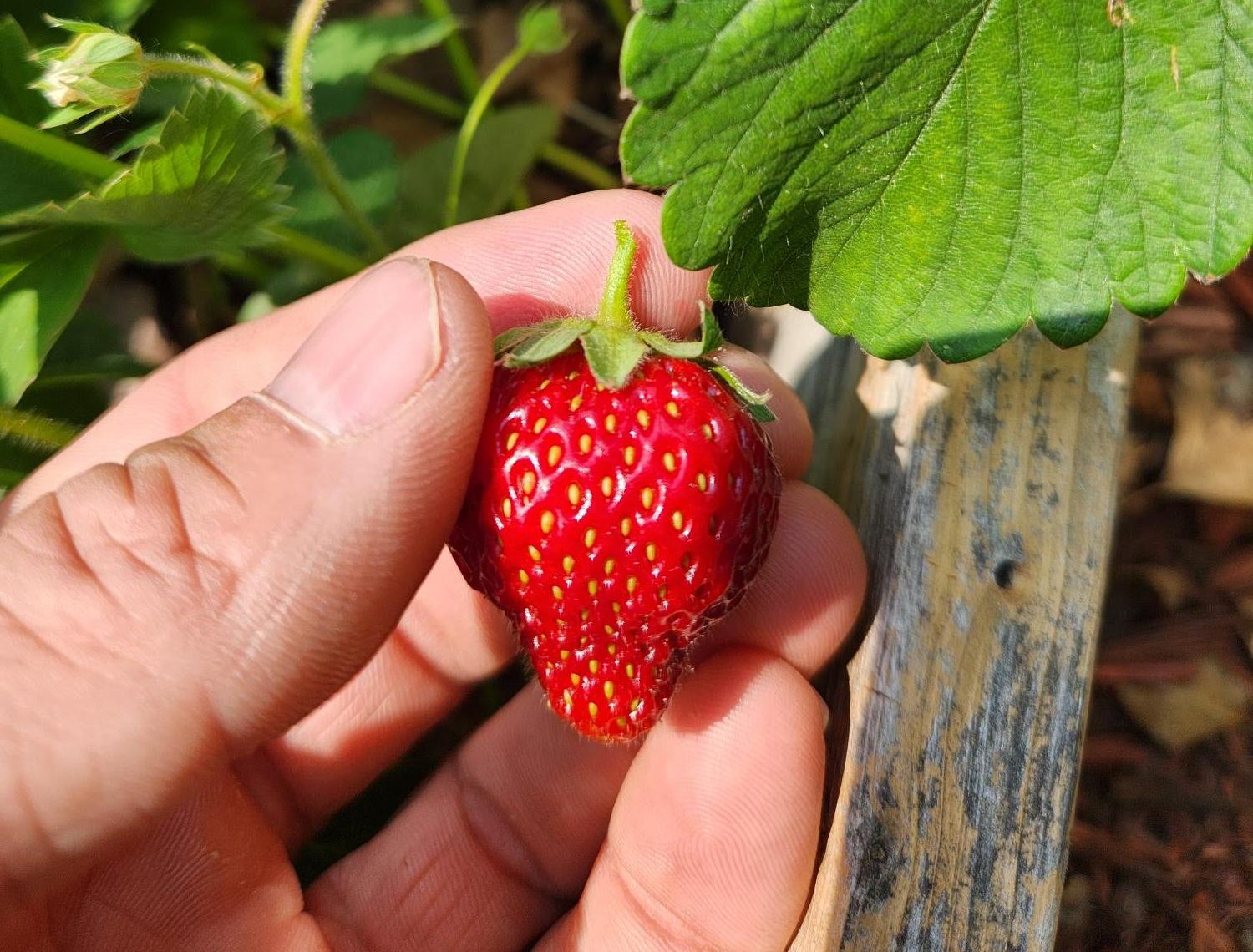Harvest strawberries when the fruit are uniformly red
Few can resist the allure of fresh strawberries — they’re an early summer treat for many. Luckily, cultivating these delectable fruits is relatively easy. With full sun, well-drained soil and just a little bit of attention, you can reap the rewards of a tasty harvest. In this article, horticulturists with Iowa State University Extension and Outreach answer questions about strawberry care in the home garden.
When should strawberries be harvested?
Harvest strawberries when the fruit are uniformly red (fully ripe). Strawberry cultivars can differ on what shade of red indicates they are fully ripe. A substantial white ring inside of the berry usually indicates when a berry is not fully ripe. Taste each cultivar to see what color indicates the optimal flavor for you.
Pick the berries with the caps and stems attached to retain firmness and quality. Pinch off the stem about 1/4 inch above the cap. Don’t pull them off. Pulling them off can create a wound, which can decrease the berry shelf-life.
Strawberries should be picked about every other day in warm weather and every three to four days in cool weather. The harvest period for some June-bearing varieties may last three to four weeks. Strawberries can be stored in the refrigerator for up to five to seven days. Ideal storage conditions are 32 degrees Fahrenheit and 90% to 95% relative humidity.
How often do I water my strawberries?
Strawberry plants need 1 inch of water per week for adequate growth. Water the strawberry plant once a week during dry weather. Water in the morning to allow for the foliage to quickly dry. The use of drip irrigation systems or soaker hoses is also beneficial for keeping the foliage dry and reducing issues with diseases.
How do I control weeds in my strawberry patch?
Controlling weeds is important to maintain healthy, productive strawberry plants. Weeds compete for water, nutrients and sunlight, while also increasing the risk of diseases by allowing moisture to stay on the leaves and fruit.
For home gardeners, hand-weeding and frequent shallow cultivation is effective, taking special care to avoid damaging the strawberry plant’s shallow root system. Utilize the mulch that covered the plants in the winter as a mulch between the rows. This also helps reduce the amount of mud created when harvesting strawberries when the soil is wet.
When should I fertilize my June-bearing strawberries?
Established plantings of June-bearing strawberries should not be fertilized in spring. Spring fertilization stimulates foliar growth, produces softer berries and increases disease problems. Lush, vegetative growth may make picking difficult. Also, soft berries are more likely to be attacked by fruit rots.
Fertilizer should be applied to June-bearing strawberries during the renovation process immediately after the last harvest of the season. Apply an all-purpose fertilizer at a rate of a half pound of actual nitrogen per 100 feet of row.
Some of the strawberries in my garden are covered with a gray, velvety growth. What is it and how can it be controlled?
The gray, velvety growth on your berries may be gray mold. It is also known as Botrytis fruit rot. This fungal disease thrives in humid conditions and poor air circulation. It often affects berries touching the soil or other infected ones.
Cultural practices can help minimize damage. Avoid spring fertilization for June-bearing strawberries to prevent excessive foliage growth, which creates a favorable environment for gray mold. Weed control and mulching with straw keep berries dry and off the ground. Irrigate in the morning during dry spells to promote quick drying. Harvest ripe berries frequently, handling them gently to prevent bruising, and refrigerate immediately. Remove and discard any berries showing signs of gray mold promptly. While fungicides are an option for commercial growers, focusing on cultural practices is the best approach for home gardeners to combat Botrytis fruit rot.
There are small, black, yellow-spotted beetles feeding on my strawberries. What should I do?
The small, black beetles are likely sap beetles.They are also known as picnic beetles or picnic bugs. Sap beetles commonly feed on overripe or damaged fruits and vegetables in the garden.
Sanitation is the best management strategy for sap beetles in home gardens. Keep the strawberry patch as clean as possible through timely picking and removal of damaged, diseased and overripe fruit. Insecticides are not a viable option for gardeners as few insecticides are labeled for use on strawberries in home gardens.
My strawberries aren’t as sweet as normal. Why?
Weather significantly impacts the flavor of fruits and vegetables. For strawberries, warm, sunny days and cool nights during fruit development produce the most flavorful berries. Cool, cloudy weather in May and June reduces sugar content, resulting in less sweet berries. Extremely hot weather can lead to slightly bitter-tasting berries.
My strawberries are small and dark maroon color, but don’t taste ripe. Why?
Leather rot, a common fungal disease in wet conditions, causes fruit rots in strawberries. Berries infected before they are ripe may not size up and are maroon. Despite a dark color they are low in sugar and off-flavor. Minimize soil contact and remove infected fruit to control leather rot.




